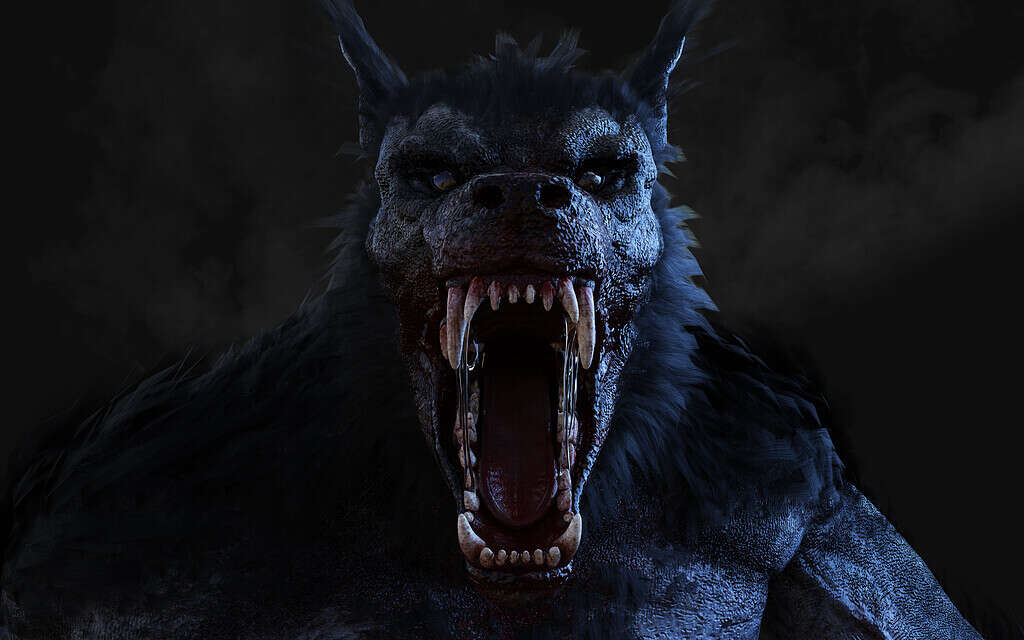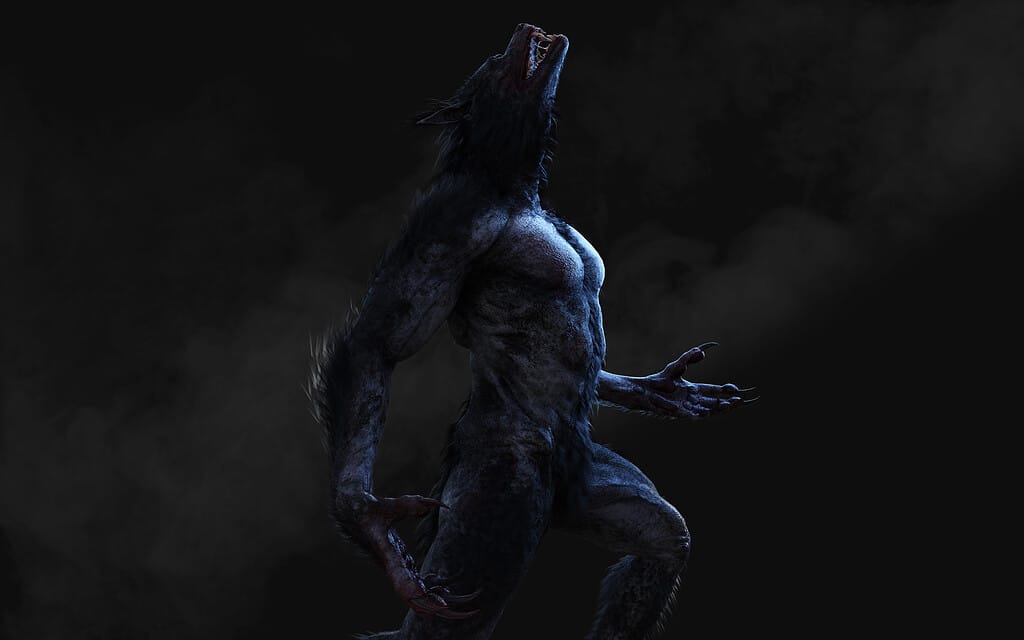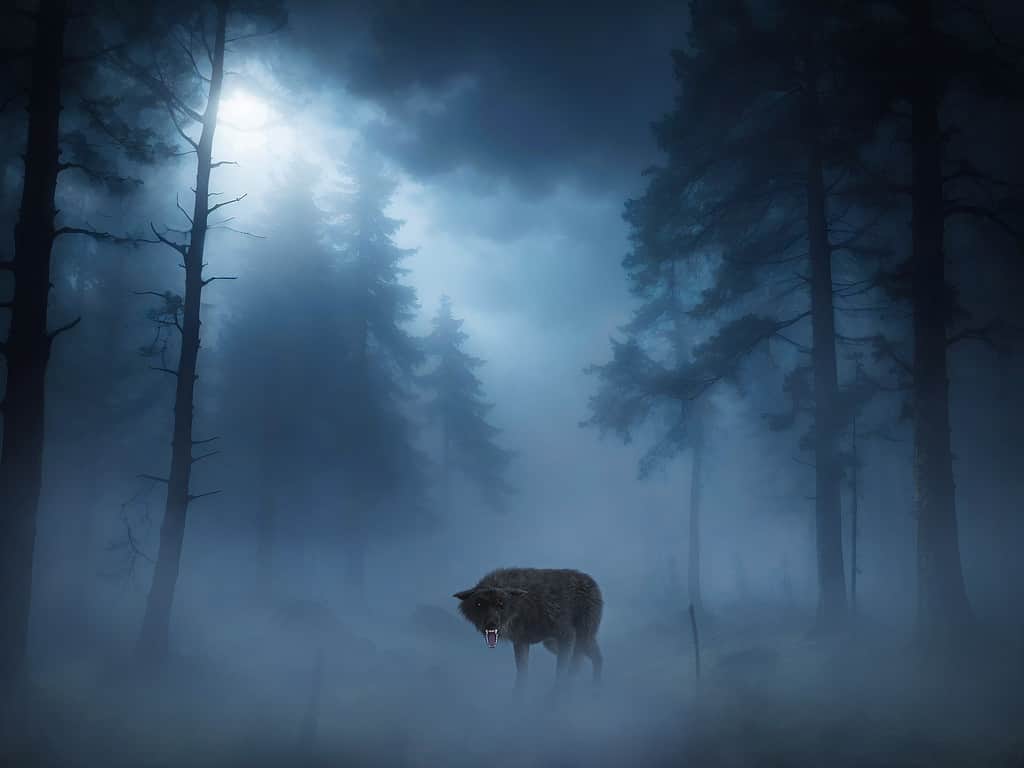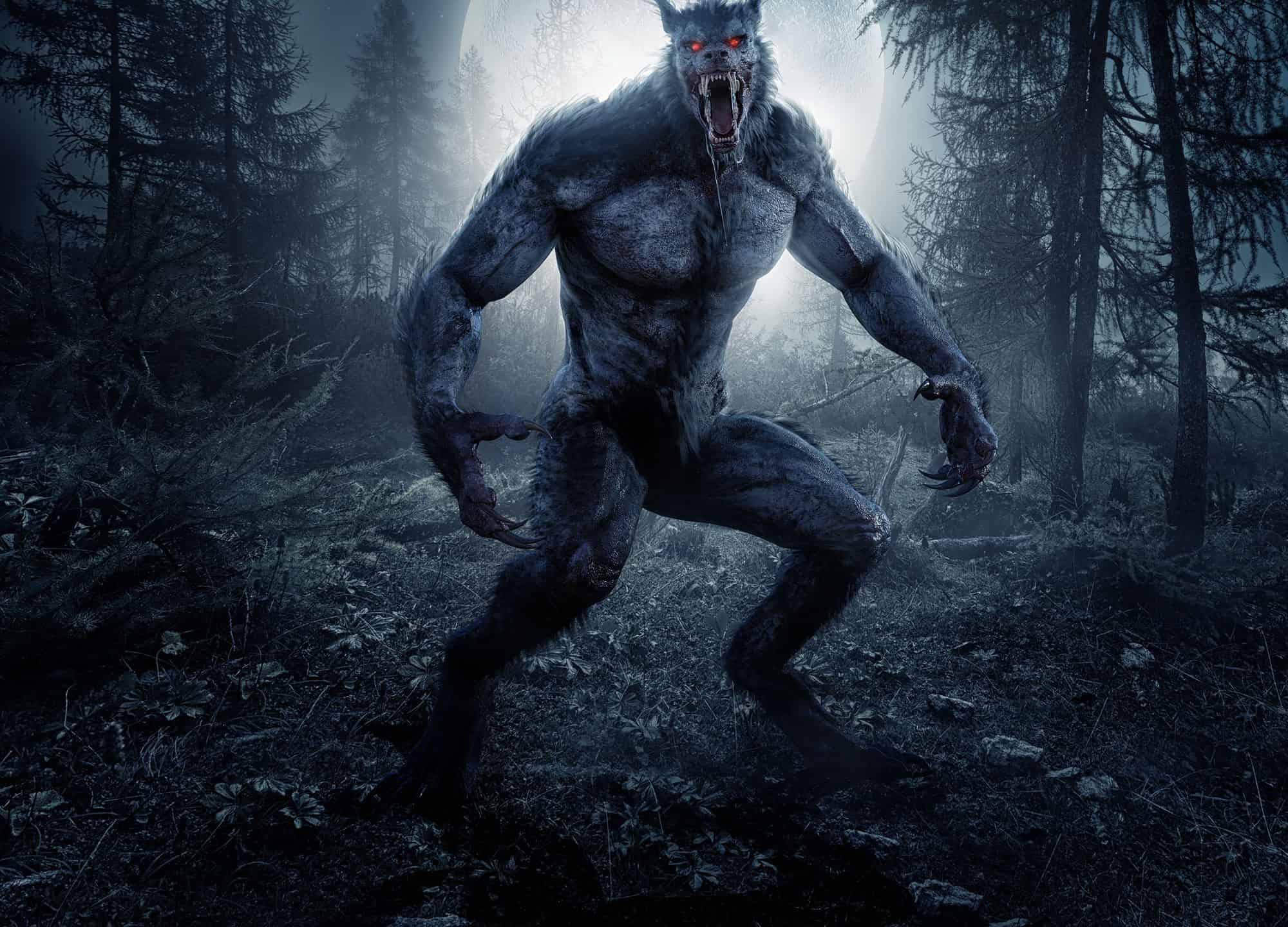In the darkening days of autumn, under the swollen moon, the folklore of monsters and otherworldly creatures can make your imagination run wild. Actually, many of those legends and lore do have some basis in fact.
Take the lycanthrope, for instance. Lycanthropy, as you’ll discover in this article, is an actual condition. While this creature is akin to the werewolf, it’s not exactly the same. Read on to discover the origins of both the lycanthrope and werewolf as we dig into their links to reality and their key differences.
Key Differences Comparison Table
| Characteristic | Lycan | Werewolf |
|---|---|---|
| Control | They are more self-aware and intelligent. | They are less intelligent and more animal-like in nature. |
| Transformation | They can transform at will. | They can only transform under a full moon. |
| Perceptions Around Creature | More positive, with religious and spiritual undertones | More negative with witchcraft or Satanic undertones |
| Strength | More muscular, and stronger, but can only be killed by decapitation or severing its spine | Not as strong, but it takes a silver bullet or silver stake through its heart to kill it |
| Origins | Lycanthropy comes from Greek mythology | Roots in old English and European folklore |
Lycanthrope vs. Wolf: Differences in Origin

In many cultures, people quite unfairly associate wolves with the devil.
©Zeferli/iStock via Getty Images
Werewolves
In the Late Middle Ages, European countries believed that witches could curse their farmland and their families, so they conducted witch trials. Those trials typically led to death sentences for the “witches.” During this time, they also held very similar werewolf trials that led to more death sentences.
People believed that the devil gave powers to witches and werewolves in exchange for their souls. In 14th to 17th century France, there were hundreds of cases of werewolves being brought to trial for gruesome mutilations and murders — mostly of women and children. In the late 1500s case of the Werewolf of Châlons, a tailor named Nicolas Damont confessed to murdering and mutilating numerous children and eating them. He also claimed that he hunted for the children while in the form of a wolf.
Damont was sentenced to death, but the idea of werewolves being behind serial killings or brutal murders was not new. In fact, the idea that people could be bitten by a wolf, cursed by someone, or turned into a werewolf by the devil continued for hundreds of years.
Lycanthropes, aka Lycans
It was the ancient Greeks who gave the world the legend of lycanthropes. In one particular myth, a man named Lycaon sacrificed his own son and then served his flesh to Zeus. He wanted to trick the god, testing him to find out if he could tell the difference between human flesh and animal meat. When Zeus found out that he’d eaten the flesh of Lycaon’s own son, he was enraged. As punishment, he turned Lycaon and his surviving sons into wolves.
Later on, in Nordic lore, there were other tales of humans turning into wolves. For example, the Saga of the Volsungs tells the tale of a father and his son who found mystical wolf skins in the forest. After putting these pelts on, the two were able to transform into wolves that hunted and killed people in the nearby forest.
Today, we understand that many of the tales and folklore surrounding these ideas came from a misunderstanding of the pathological nature of serial killers. It was hard for people to reconcile the fact that humans could be responsible for the gruesome and deviant murders they witnessed.
Many of the accused people finally confessed to the torturings, mutilations, and murders. However, many of them also blamed the “beast” within themselves. Several talked about feeling and even witnessing themselves being transformed into wolves. This later became a psychological phenomenon psychiatrists called lycanthropy.
Lycanthrope vs. Werewolf: Difference in Transformations

There are differences between how a lycanthrope and a werewolf transform.
©mrjo2405/iStock via Getty Images
There are a myriad of cultures that bear tales of human-to-beast transformations. Many Native American tribes have stories of skinwalkers — people who can transform into any animal form merely by putting on the animal’s skin. Moreover, the Celtic tradition spoke of selkies who were shape-shifting creatures that could shed their skins to become human. Werewolf and lycanthrope stories also revolve around human transformation.
For werewolves, this transformation has been orally and, in cinematic years, visually portrayed as a painful process. In multiple cases, a transforming person’s bones will elongate by force, while they change shape. For instance, the face’s features protract into a snout, while the hands and feet grow larger until they turn into paws. Most importantly, werewolves are usually servile to the moon’s phases with no control over their transformation.
While werewolves are at the mercy of the full moon, lycanthropes, or lycans, are able to transform at will. They are human-wolf hybrids and are more intelligent than their werewolf counterparts. One of the key differences between a werewolf and a lycanthrope is that the latter never fully becomes a wolf. Werewolves, on the other hand, become almost fully wolflike even though they maintain some of their human intelligence.
One of the most visual differences between the Lychanthrope and the werewolf when it comes to the final transformation is their appearance. While the werewolf looks just like a big wolf, the lycanthrope appears as more of a human-wolf hybrid. The lycan will most often stand on two legs and have two arms rather than four legs. The image brings the term wolfman to mind.
Lycanthrope vs. Werewolf: Differences in Strength and Control

Lycanthropes tend to look more like humanoid wolves, while werewolves look like wolves after transforming.
©mrjo2405/iStock via Getty Images
Though you probably wouldn’t want to come up against either the lycanthrope or the werewolf in a dark alley, one is stronger than the other. Both are obviously stronger and faster than humans, but what are the differences in strength of the lycanthrope vs. the werewolf?
Lycans are typically more muscular in stature, stronger, and more intelligent. Whereas werewolves retain less of their human nature, lycans are able to hybridize the strength and intelligence of both their human and wolf aspects. This gives them not only power but the self-awareness of how to use it.
Killing a lycanthrope vs. killing a werewolf holds some differences as well. For one, you can shoot a werewolf with a silver bullet or use some other silver weapon to instantly kill it. On the contrary, silver won’t kill a lycan. A lycan’s silver-induced wound may take a long time to heal, but only decapitation or complete spine severance will actually kill it.
Lycanthrope vs. Werewolf: Differences in Perceptions of the Two

Perhaps people’s belief in werewolves and lycans hearkens back to finding a way to explain our darkest impulses.
©sarah5/iStock via Getty Images
When looking back at ancient legends and folklore, most often the image of the wolf is negative. This stems from the time when farmers were even more at the mercy of these predators, who could cost them much of their livelihood by preying on their livestock. Some cultures even believed that wolves belonged to the devil.
As a reflection of this idea about wolves, werewolves have also been portrayed in folklore as evil. Many believed that the devil was the very one who gave them their power — or curse. Movies, however, have oftentimes shown werewolves as individuals who were bitten by another werewolf, thereby passing on the curse. They may have been innocent, unwitting victims.
Lycanthropes, though, are often thought to be very religious. Additionally, they don’t kill with the reckless abandon of werewolves. Their human essence seems to have more power over their thoughts and intentions. Their bloodshed is often committed among others of their kind for reasons of power.
Conclusion
Both lycanthropes and werewolves are products of mythology and folklore. However, there have been many people in the past who have been mistakenly labeled as one of these creatures. People with the condition called hypertrichosis have excessive hair growth and were once thought to be werewolves.
Additionally, people who suffered from porphyria or the effects of rabies were also believed to be lycanthropes or werewolves, while people with lycanthropy considered themselves lycans or werewolves. Today, there are still many who would argue that these creatures do exist.
Thank you for reading! Have some feedback for us? Contact the AZ Animals editorial team.








